―
An Ice-Free Globe
―
Disappearing glaciers are sending us warning about the climate crisis. Even if we achieve the global warming target, we cannot save them all. The scene below is not from a disaster movie. This is a computer simulation made by American scientists in 2020, supposing all the glaciers on Earth were to melt. If this were to happen, it is estimated that sea levels in most areas of the Pacific and Atlantic Oceans will rise by 66 meters (216 feet).
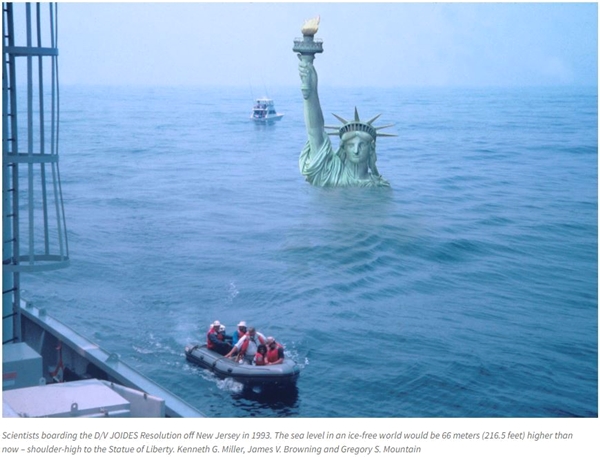
With the sea level up to the statue's shoulders, that means most of New York City would be submerged except for the very highlands.
We are not likely to face such an extreme situation as that pictured, but the future definitely seems to be heading in that direction.
―
One-third of World Heritage Glaciers will vanish
―
◎ Glaciers are massive bodies of slowly moving ice. Glaciers form on land, and they are made up of fallen snow that gets compressed into ice over many centuries. They move slowly downward from the pull of gravity. Most of the world’s glaciers exist in the polar regions [and] about 2 percent of all the water on earth is frozen in glaciers.
‒National Geographic
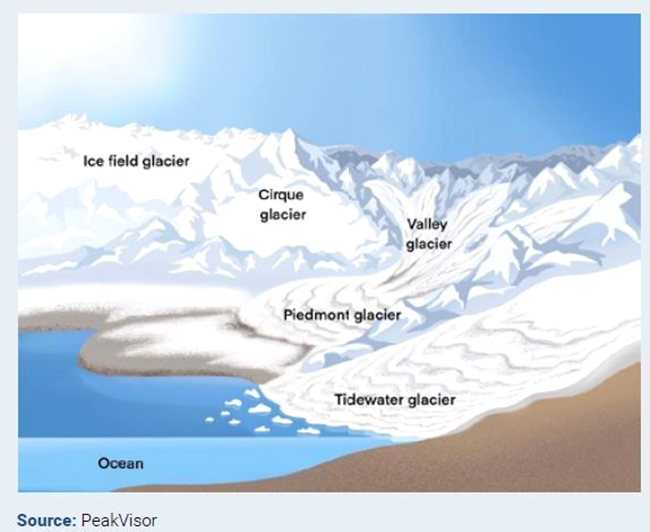
(Types of glaciers. Source: UNESCO)
The international community is working to limit average temperature rise to within 1.5°C (2.7°F) above pre-industrial levels by 2030.
However, recently UNESCO announced that even if humanity achieves the global warming target, one-third of the glaciers in World Heritage-designated areas will disappear by 2050.
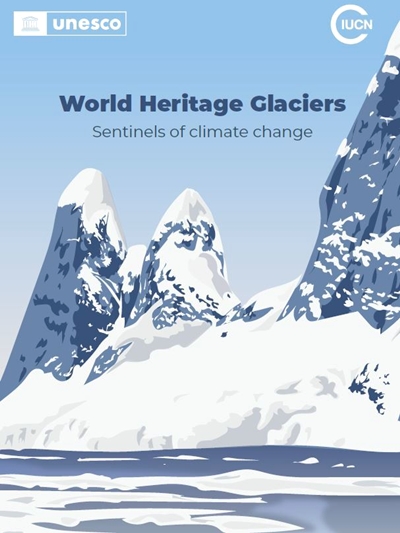
Wait, but are there glaciers in Africa? — Yes. Even in Africa, ice covers the top of high mountains. Mount Kilimanjaro in Tanzania, Mount Kenya in Kenya, and Mount Rwezori in Uganda are all glacier-capped.
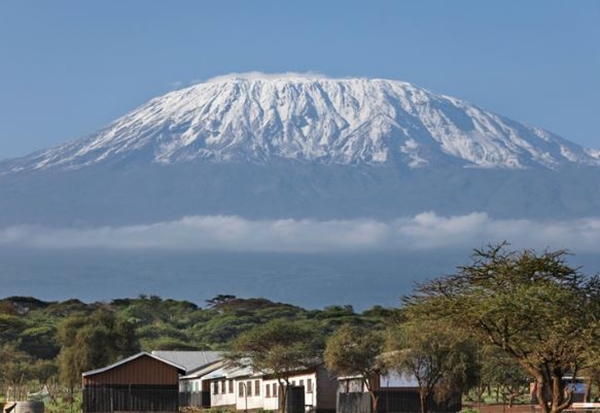
(Mount Kilimanjaro, Africa)
On November 3rd, UNESCO published a report titled "World Heritage Glaciers: Sentinels of climate change." This report assesses the trend of glacier decline and details measures to protect glaciers in fifty World Heritage sites during the 20-year period from 2000.
The World Heritage glaciers designated by UNESCO account for about 10% of all glaciers. 58 billion tons of meltwater diminishes these glaciers per year—the equivalent of the total combined annual water consumption of Spain and France.
―
Some glaciers will totally vanish by 2050
―
World Heritage glaciers are disappearing the fastest in Asia.
As of 2021, the glacier in Yunnan Province, China has dwindled 57.2% since 2000, as the most rapidly diminishing among all the World Heritage glaciers.
Glaciers in the Tien-Shan Mountains in Kazakhstan and Uzbekistan in Central Asia have shrunk by 27%.
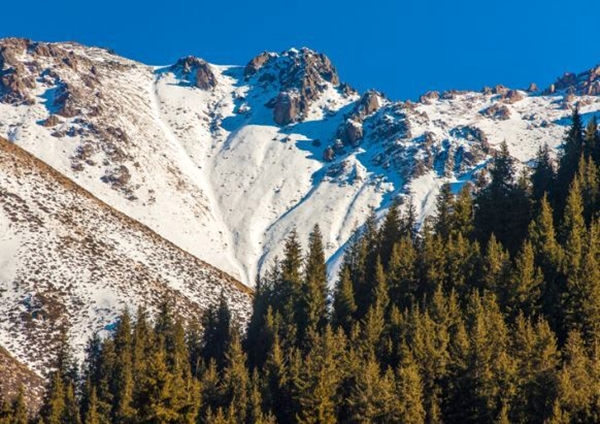
(Tien-Shan Massif)
45.6% of the glacial mass in Argentina's Los Alerces National Park has also disappeared.
There are areas where the ice fields will be completely gone by 2050, no matter what mankind does.
First, all glaciers in Africa are expected to disappear. The same fate has already befallen two glaciers in North America—Yellowstone and Yosemite Park.
The World Meteorological Organization (WMO) published a report last year that glaciers all across Africa, such as Kilimanjaro, would disappear by 2040, ten years earlier than 2050 predicted by UNESCO.
Europe is no less a predicament. It is predicted that Mont Perdu glacier, spanning the Italian Dolomites, France and Spain, will disappear by 2050.
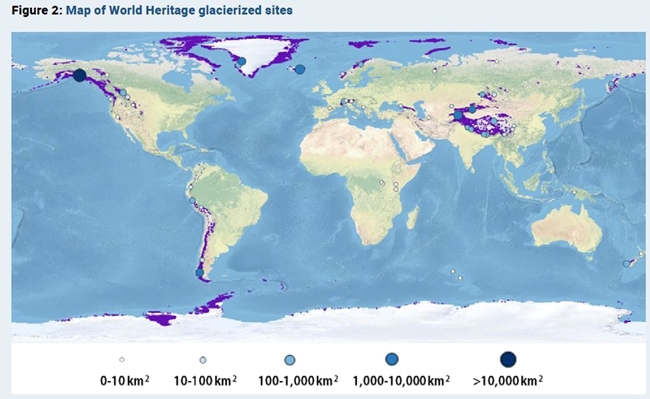
(World Heritage Glacial Distribution Map)
According to the report, the speed at which glaciers are disappearing is accelerating year by year, and the smaller glaciers are dwindling even faster.
Glaciers ranging in size from 1 to 10 km2 experienced a loss of about 4% from 2000 to 2005, compared to nearly 10% from 2015 to 2020. On the other hand, glaciers with a size of 100 to 1000 km2 decreased by about 2.5% from 2000 to 2005, and the rate almost doubled from 2015 to 2020 to about 4.8%.
―
The 8 hottest years in history
―
On November 6, the United Nations released another report on changes in glaciers and sea levels due to climate change.
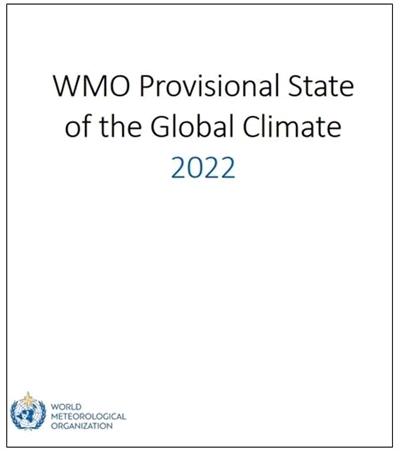
The World Meteorological Organization (WMO) has issued a climate provisional report for 2022, and it is said that these last 8 years in a row have been the hottest period in recorded history.
Earth's average temperature in 2022 is estimated to be about 1.15 (1.02~1.28)°C [2.07°F] higher than the pre-industrial (1850 to 1900) average, and the highest temperature record has been broken each year consecutively since 2016.
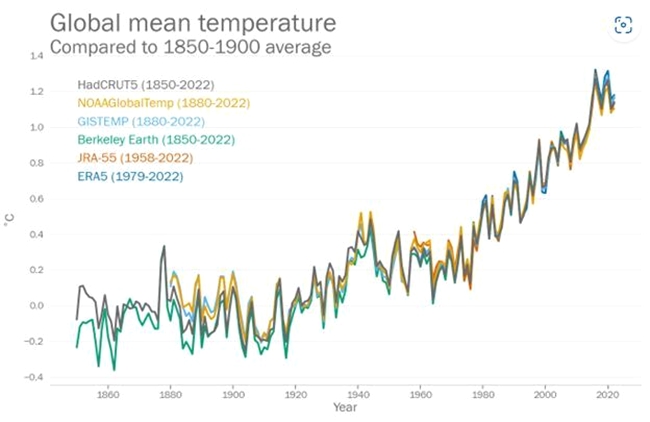
The rate of sea level rise has doubled since 1993; this year it reached an all-time high. Moreover, ocean temperatures are registering warmer than ever.
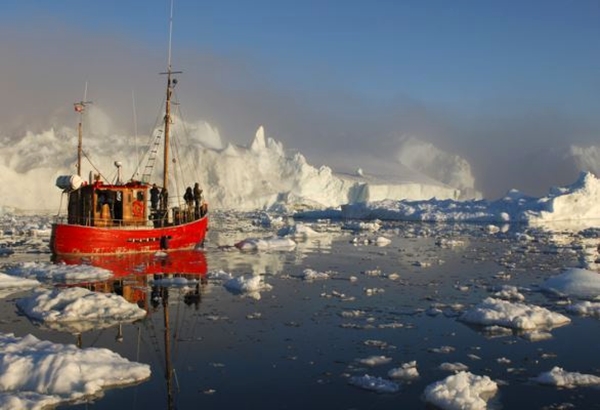
(Icebergs off Greenland)
Antarctica's ice sheet area is also at its lowest level, down by nearly 1 million square kilometers from the average. Greenland's northern polar ice sheet has also declined for 26 years in a row. This year rain instead of snow has fallen in the region for the first time ever.
Also, 2022 will see a reduction in the average thickness of glaciers across Europe's Alps by 3 to 4 meters or more. Compared to 2001, Switzerland's glacial volume has decreased by a third.
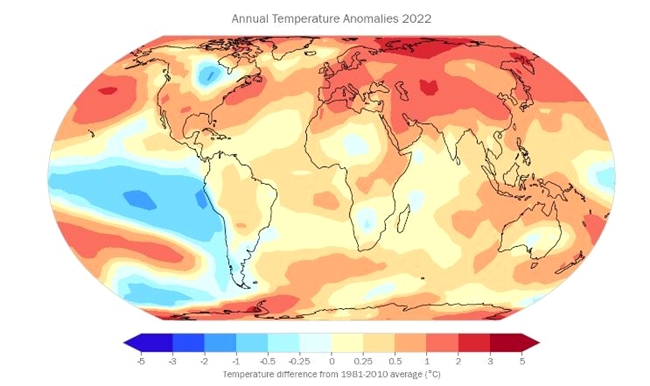
(Temperatures in 2022 compared to average temperatures for 1981-2010)
WMO Director-General Petteri Taalas said: “With the critical conditions we face now, it is practically impossible to achieve our targeted limit of 1.5°C atmospheric warming.”
“It is already too late to cope with the disappearance of many glaciers,” he warned. “The rate of sea level rise has doubled over the past 30 years, posing a major long-term, existential threat to millions of coastal residents and low-lying countries.”
―
What will happen when the glaciers melt
―
What will happen to us, to humankind, if the glaciers disappear?
◎ Snow and ice serve as a reflector radiating solar energy back into space. As the glaciers melt, the Earth absorbs more solar energy, causing global temperatures to rise. In turn, enhanced global warming causes glaciers to melt faster.
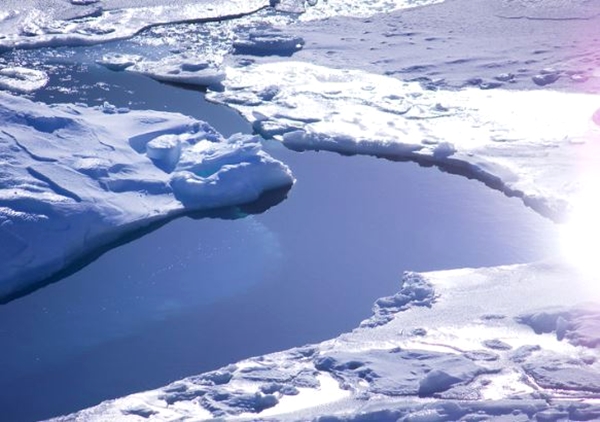
◎ Earth maintains a constant temperature through global circulation of seawater. When glaciers melt and enter the sea in large quantities, changes in the salinity and temperature of the surrounding seawater cause problems with ocean current circulation. Climate polarization then occurs, with polar regions becoming colder and equatorial regions becoming hotter. This increases the likelihood of frequent extreme weather events such as floods, droughts, severe cold and extreme heat.
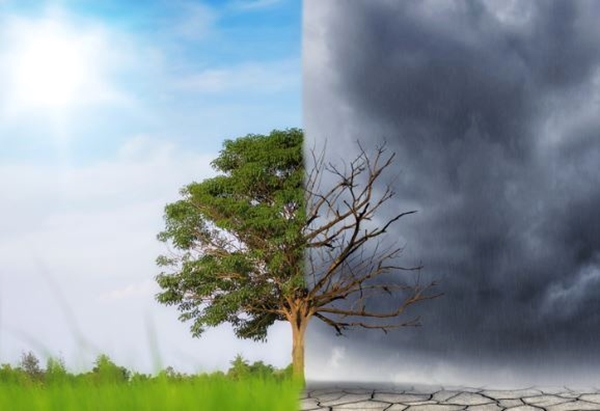
◎ It causes sea level rise. The findings of the British research team indicate that the meltwater from glaciers between 1994 and 2017 amounted to 28 trillion tons. During this period sea levels rose 3.5 cm. It is estimated that for each centimeter rise in sea level, 6 million people lose their livelihoods.
◎ Glaciers on the high mountain slopes are a source of drinking water. In fact, in Italy, glacial drinking water sources are depleted, most areas are dry, and agricultural yield is also decreasing.
◎ Arctic creatures such as polar bears and penguins disappear, leading to ecosystem disruption and biodiversity crisis.
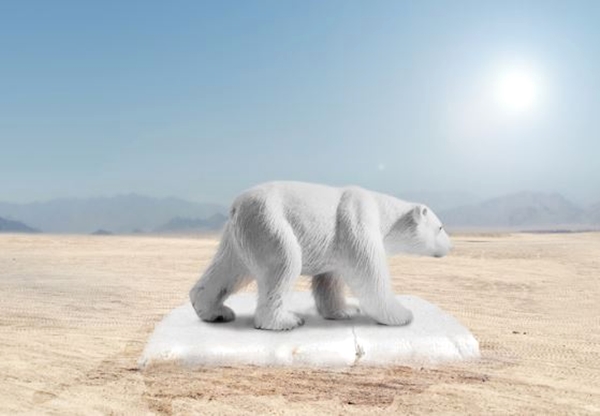
◎ Viruses and bacteria trapped in glaciers and permafrost can wake up. In fact, as the Siberian permafrost melted, a 30,000-year-old virus was discovered in 2014, and in 2016 cases of harm were reported. It included children dying of anthrax that spread when reindeer carcasses were exposed.
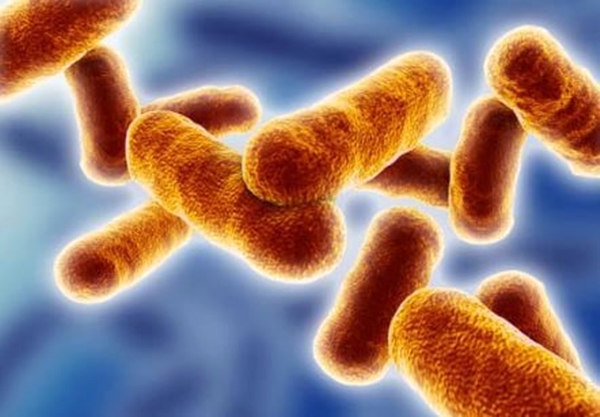
―
Two-thirds of glaciers are still available
―
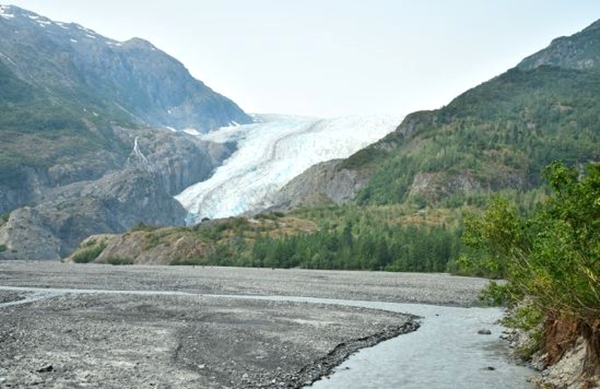
(Exit Glacier, Alaska)
One glacier in particular has become an icon of climate change.
In 2015, former U.S. President Obama, viewing a glacier named "Exit" in Alaska's Kinai Fjords National Park, said, "Our grandchildren won't be able to see this glacier." Ever since then, Exit Glacier has become an icon of climate change. The sad fact is, the area of the glacier is diminishing day by day.
https://www.yna.co.kr/view/AKR20220904044100072?site=mapping_related
UNESCO stressed that the only solution to protecting the glacier is to significantly reduce greenhouse gas emissions.
If humanity works hard and keeps to the 1.5℃ goal, this will allow future generations to see the remaining two-thirds of the glaciers intact. Although one-third will be with us no more.
Written by Sharon Choi
Director of Planning
Sunhak Peace Prize Secretariat

